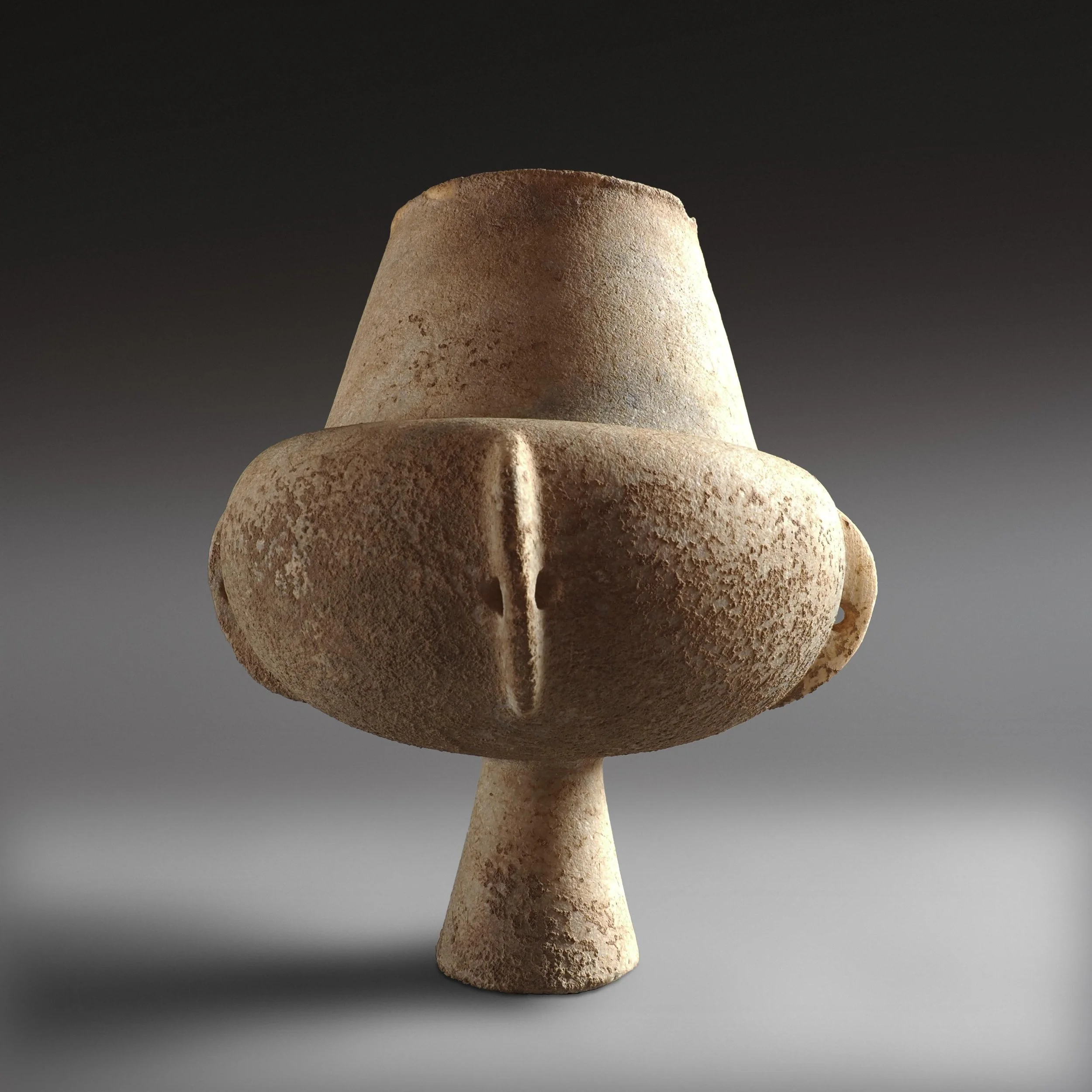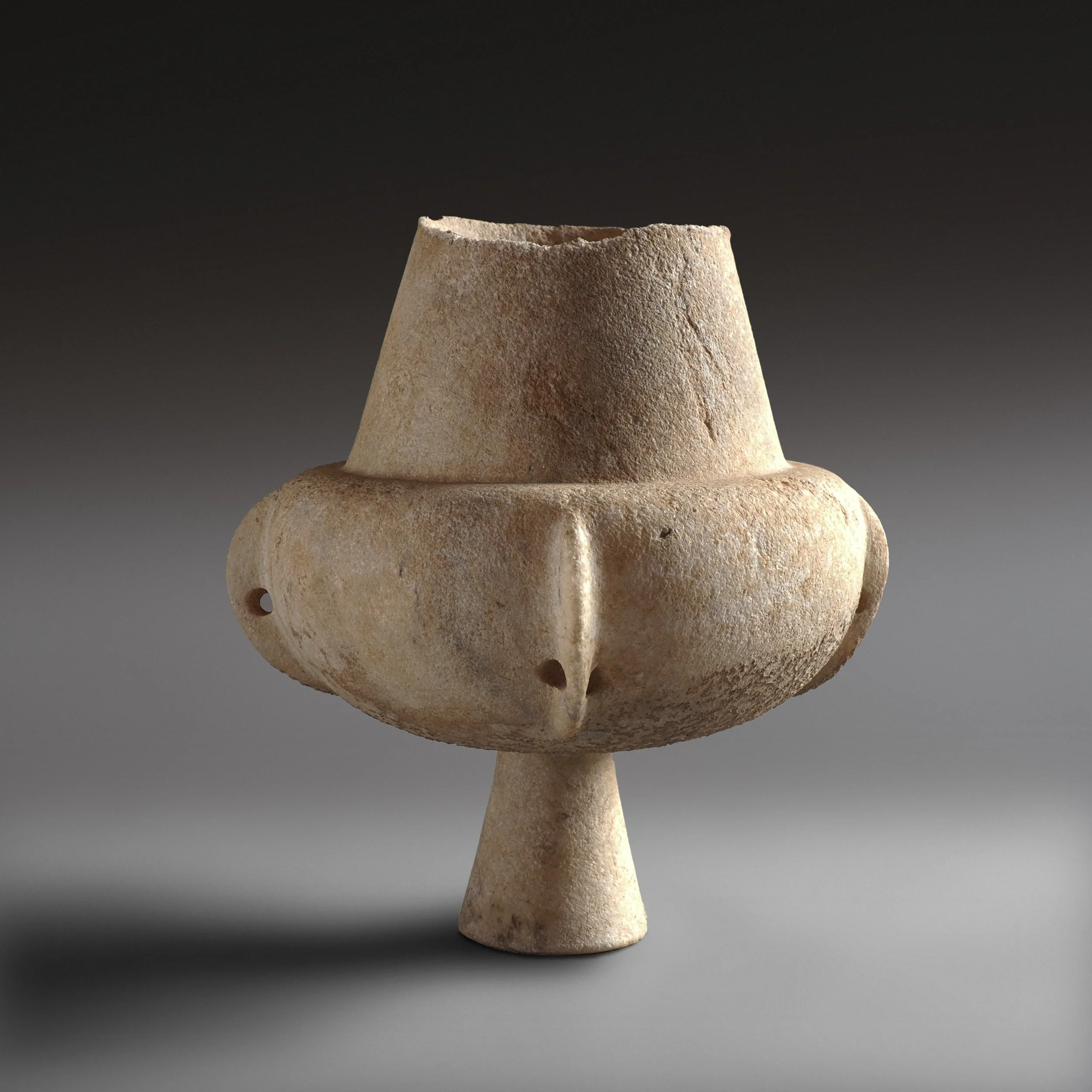KANDILA
Early Cycladic I, Grotta-Pelos culture (Greece),
Early Bronze Age, circa 3000 - 2800 B.C.
Marble
21.5 cm high
Provenance:
Private collection, U.S.A (acquired April 1996)
£28, 000



The early bronze age marble vases found in the Cyclades, with their distinctive bulbous bodies, high-collared necks and pedestal feet, are known as ‘Kandila’. They represent the most prevalent Cycladic vessels made before 2700 B.C. and take their name from their resemblance to modern Greek church lamps.
They were made from both marble and clay, and in a wide range of sizes. Cords were likely strung through the four pierced lugs evenly spaced around the body, allowed the lanterns to be suspended, or a lid to be attached. They could also have held liquids, such as oil or wine.
The production of stone vases was an important and characteristic industry of the Cyclades, and it was only on those islands that white marble was used as a primary material for such vessels. Marble vases like this one were laboriously carved with blades of obsidian, a volcanic glass, and abrasives such as sand, emery, and pumice. The sculptors who carved the Cycladic marble figures—perhaps the most distinctive product of the Cycladic culture—probably also made the stone vases. Sculptors living on different islands produced marble vessels and figures in a similar style but with distinctive variations.
The Early Cycladic period is often up divided into three cultural groups. The earliest of these is the Grotta-Pelos culture, which is roughly dated to around 3200 - 2800 B.C. The name refers to the type sites used by Colin Renfrew to define the culture: Grotta (on the island of Naxos) and Pelos (on Milos). However, the term applies to material from the Cyclades as a whole. There are not always clear boundaries between cultural groups, but each produced objects with enough formal distinction between them to be placed into separate groups.
The Cycladic culture, flourished throughout the Greek islands of the Cyclades, in the southwestern Aegean. The culture can be counted among the three main ancient Aegean cultures, together with the Minoan civilisation on Crete and the Mycenaean civilisation on mainland Greece.
Surviving cyclidic sculpture possesses an alluringly abstract and minimal aesthetic that inspired avant-garde modern artists such as Brancusi, Giacometti, Henry Moore, working in the early 20th century.
Related literature:
P. Getz-Gentle, Stone Vessels of the Cyclades in the Early Bronze Age, Pennsylvania State University, 1996, pl. 18d for a kandila of similar form, attributable to Kandila Sculptor B.

Cycladic Kandila, Grotta-Pelos Culture (Greece), 3200BC - 2800BC, marble, 27.8 cm high/ British Museum, London (1843,0507.76)

Cycladic Kandila, Attributed to 'Kandila Sculptor B', Grotta-Pelos Culture (Greece), 3200BC - 2800BC, marble, 27 cm high. Getty Museum (90.AA.9).
